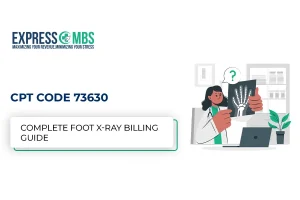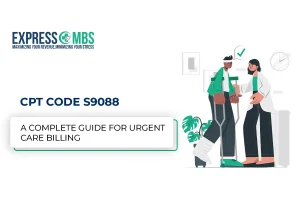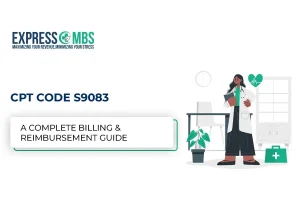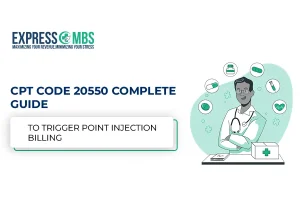
CPT Code 12002 – Laceration Repair Billing Simplified

Wound care is a routine part of clinical practice, and CPT Code 12002 plays a key role in billing for these services. Whether you’re a provider or a billing specialist, understanding this code ensures accurate claims, proper reimbursement, and reduced denials.
Let’s dive into what CPT 12002 covers, how to use it correctly, and how it compares to related codes.
- What CPT Code Covers: 12002 are used for simple repair of superficial wounds on specific body parts measuring 2.6 cm to 7.5 cm in length.
- Session Duration Requirements: Time is not a determining factor for this code—length and location of the wound are.
- Who Can Use the Code: Physicians, physician assistants, nurse practitioners, and other licensed providers.
- Best Practices: Precise documentation of wound size, location, and repair type is essential. Use modifiers when needed for clarity.
What Is the CPT Code 12002?
CPT Code 12002 is officially described as:
“Simple repair of superficial wounds of scalp, neck, axillae, external genitalia, trunk, and/or extremities (including hands and feet); 2.6 cm to 7.5 cm.”
This laceration repair CPT code is classified under simple repair, meaning it involves one-layer closure using sutures, staples, or adhesive strips. It does not include layered closures or significant tissue manipulation.
Who Can Bill CPT Code 12002?
The following licensed professionals can report CPT 12002:
- Emergency physicians
- General practitioners
- Surgeons
- Dermatologists
- Physician assistants (PAs)
- Nurse practitioners (NPs)
However, they must document the wound characteristics clearly to justify the code selection.
Services Covered Under CPT Code 12002
The 12002 CPT procedure code covers:
- Wound cleansing and preparation
- One-layer closure with sutures, staples, or tissue adhesives
- Local anesthesia (when used for the procedure)
- Basic dressing of the wound site
Note: If more complex repair methods (e.g., layered closures) are used, codes like CPT Code 12032 may be more appropriate.
Time Requirements for CPT Code 12002
Unlike some time-based CPT codes, CPT 12002 is not billed by time. Instead, it’s based on:
- Wound location (e.g., trunk, extremities)
- Wound length (must be between 2.6 cm and 7.5 cm)
- Complexity of repair (simple/superficial only)
Modifier Use with CPT Code 12002
It depends on the circumstances. You may need modifiers such as:
- Modifier -25: If the laceration repair is performed alongside a separately billable E/M service during the same visit
- Modifier -59: If multiple procedures are performed, and each is distinct
Other scenarios may require Modifier -51 (multiple procedures) or Modifier -76 (repeat procedure by same provider).
Tip: Always link modifiers with solid documentation to avoid audits or rejections.
Common Billing Mistakes to Avoid
- Undercoding by choosing 12001 (for wounds <2.5 cm) when the wound is actually 3–4 cm
- Missing modifiers when billing alongside E/M services
- Insufficient documentation of wound length, depth, or location
- Using 12002 for complex closures, which require different codes like 12032
Always double-check clinical notes and code descriptors.
Reimbursement Rates for CPT Code 12002
CPT 12002 reimbursement can vary based on payer and region. On average:
- Medicare 2025 Fee Schedule: ~$92–$110 (varies by locality)
- Commercial Insurances: Range between $100–$140 depending on contract terms
Make sure to verify with your MAC or payer portal to confirm updated rates.
Difference Between CPT Code 12002 and Related Codes
Code | Length | Repair Type | Anatomic Area |
<2.5 cm | Simple | Scalp, neck, trunk, extremities, etc. | |
12002 | 2.6–7.5 cm | Simple | Same areas as above |
12011 | <2.5 cm | Simple | Face, ears, eyelids, nose, lips |
12032 | 2.6–7.5 cm | Intermediate | Scalp, axillae, trunk, extremities |
Choose based on size, complexity (simple vs intermediate), and location.
Final Thoughts
Using CPT Code 12002 correctly requires more than just measuring a wound. You must:
- Document thoroughly: Include wound size, site, closure type, and any complicating factors.
- Use modifiers when coding multiple services on the same visit.
- Stay updated with fee schedules and global period changes.
- Audit internally: Run coding audits quarterly to stay compliant and reduce denial rates.
CPT Code 12002 is a straightforward yet often misused code in wound care billing. By applying it properly, through accurate documentation, correct modifier use, and understanding reimbursement, providers and billers can avoid delays and denials.
Don’t underestimate simple laceration repairs; when coded right, they contribute to smooth revenue cycles and compliant practices.
Frequently Asked Questions (FAQs)
CPT Code 12002 is used to bill for the repair of simple lacerations that measure between 2.6 cm and 7.5 cm in length. It covers the process of cleaning the wound, closing it with sutures or staples, and applying dressings. This code applies only to simple repairs, meaning the wound involves only the skin and subcutaneous tissue without deeper layers like muscle or tendon.
Wound length is measured in centimeters from end to end in a straight line, regardless of the shape. If the wound is curved, you still measure the linear distance between the two ends. Accurate measurement is important to select the correct CPT code, since each code covers specific length ranges.
No, CPT Code 12002 is specifically for simple laceration repairs. Complex or layered repairs, which involve deeper tissue such as muscle, fascia, or nerves, require different CPT codes (like 13100 series). Using the wrong code can lead to claim denials or incorrect reimbursement.
Yes, thorough documentation is essential. This includes the exact length of the laceration, the complexity of the repair (simple, intermediate, or complex), the method of closure, and any anesthesia used. Clear documentation helps justify the use of CPT Code 12002 and supports billing compliance.
Reimbursement varies by payer, region, and provider contracts. Medicare has a set fee schedule for CPT 12002, but commercial insurers may differ. Typically, the payment reflects the complexity and time involved in repairing a 2.6 to 7.5 cm simple laceration. It’s best to check your specific payer fee schedule for exact amounts.
Yes, CPT Code 12002 can be billed alongside other evaluation or treatment codes if different services were provided. However, proper use of modifiers and clear documentation is necessary to show that the procedures are separate and distinct. This helps prevent claim denials and ensures accurate reimbursement.



